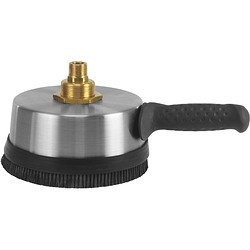My barn has a concrete aisle and concrete in the feed & tack rooms. Unfortunately, it’s graded so water flows into the feed & tack rooms, and it will go right under the walls.
The barn interior needs to be pressure washed, but keeping water out of the feed and tack rooms (which don’t get pressure washed, and shouldn’t be wet) is a frustration.
I was thinking of using those absorbent socks which should work?
But is there anything else I should consider? Like trying to seal the base of the wall between these rooms, maybe? It’s just typical 2x4 framed walls but there’s no seal between the sill and slab. It looks like one should have been used when the wall was built to prevent this issue!




 Although I might have to find a use for that floor attachment–how cool!
Although I might have to find a use for that floor attachment–how cool! (That was possible due to the floor being sloped down to a floor drain.)
(That was possible due to the floor being sloped down to a floor drain.)
